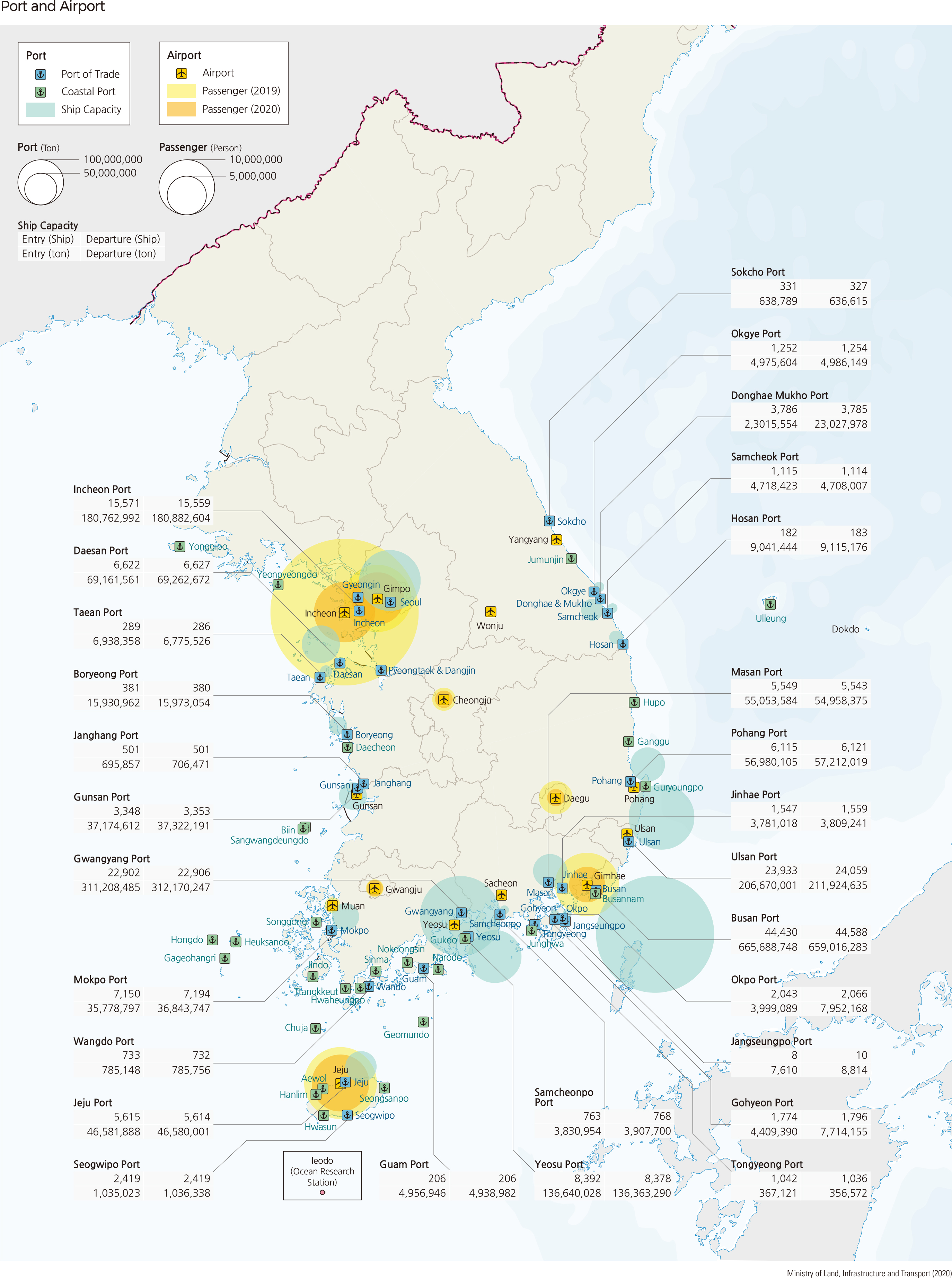Comprehensive Edition 2022
In the era of globalization, as goods, capital, information, and technology move transnationally, so do people. In the past, only a small number of people were able to experience living abroad; historically, foreigners who lived in Korea for a long time were generally diplomats or expatriates from foreign companies. Today, however, millions of people are living and working abroad.
The map shows both the number and origin of foreigners that visited Korea in 2017. About five million visitors from China, and another 2.3 million from Japan, visited Korea in 2017. Taiwanese and American visitors were about 0.9 million each. The number of visitors from the other countries was less than 0.5 million. More visitors are currently coming to Korea from geographically close countries, with the number of visitors decreasing as travel distance to Korea increases. An exception to this pattern is the United States, with which Korea has kept a close relationship since the Cold War era.
The graph shows the trends of Koreans who go abroad and foreigners who visit Korea. Until 1960, both numbers were less than 10,000. The number of foreign visitors reached 100,000 in 1970, 1 million in 1983, 5 million in 2005, and 10 million in 2012. In 2018, approximately 15.6 million people visited Korea. For a long time, foreign arrivals exceeded Korean departures. Until 1988, the number of foreign arrivals was double the number of Korean departures. This trend was reversed in 1989 after the Korean government authorized more overseas travel. Since then, Korean departures have gradually increased, except during the economic recessions in the late 1990s and the late 2000s. In 2018, the number of Koreans who traveled abroad was approximately 29 million, which is twice the number of foreign visitors.
The pie charts show that most Koreans exit the country through Incheon International Airport, but Gimhae Airport, Gimpo International Airport, and Busan Port are used as well. Most foreigners arrive in Korea via the ports in the Seoul Metropolitan Areas, such as Incheon International Airport and Gimpo International Airport. Others rely upon airports in Gimhae, Jeju, and Busan Port.
|


